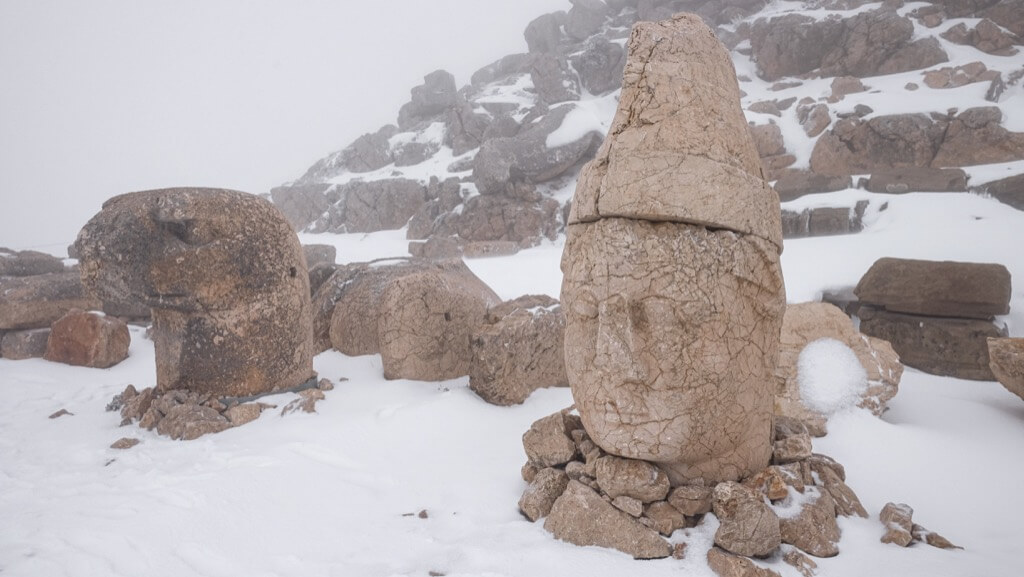In the late 15th century, Amerigo Vespucci embarked on voyages to the New World, distinct…
The Geological Marvel of Himalayan Formation
- by Mamparra

The Himalayan mountain range, standing tall and majestic, has long captured the fascination of adventurers, scientists, and curious minds alike. But how did these colossal peaks come into existence, and what does the future hold for the world’s highest mountains?
Millions of years ago, the Earth looked vastly different from what we see today. India, once a separate island continent, embarked on a remarkable journey that would eventually lead to the formation of the Himalayas. Around 220 million years ago, when the supercontinent Pangea began to break apart, India began its northward drift. Over the course of approximately 40 to 50 million years, India traversed around 6,000 kilometers before its fateful collision with the Asian continent.
This monumental collision set the stage for the birth of the Himalayas. As India pushed beneath Asia, it uplifted the Asian landmass, creating the towering mountain range we know today. What’s intriguing is that India’s shoreline, denser and more firmly bonded to the seabed, played a pivotal role in this process. It pushed the softer Asian soil upward, defying conventional expectations.
A Rapid Ascent
The Himalayas’ rise is a story of speed and magnitude. Unlike most mountain ranges, the Himalayas continue to expand at an astonishing pace. Each year, these peaks, including the renowned Mount Everest, grow by approximately one centimeter. This growth rate far outpaces other mountain systems like the Appalachian Mountains, which formed over 300 million years ago and are gradually eroding.
This continual ascent is attributed to the Indian tectonic plate’s persistent northward movement. The frequent earthquakes in the region serve as reminders of the ongoing plate motion.
An Alternate Reality
To put the Himalayas’ growth into perspective, if this rate had prevailed for a mere 40 million years, these mountains would now be nearly 400 kilometers tall. Such an extraordinary elevation would have altered the possibilities of space travel, offering a more cost-effective means of reaching low Earth orbit. Consider that the International Space Station orbits at an altitude ranging from 300 to 400 kilometers.
However, the actual course of events took a different path. The rate of vertical expansion varied throughout history, with periods favoring horizontal growth over vertical. Moreover, gravity and erosion have significantly impeded the mountains’ accumulation.
The recognition that the Himalayas emerged due to India’s collision with Asia traces back to the early 20th century. In 1912, German meteorologist Alfred Wegener introduced the “Theory of Continental Drift.” This groundbreaking theory laid the foundation for our understanding of Pangea, tectonic plates, and the dynamic nature of continents shifting toward or away from each other.

Deep in the heart of the Andes Mountains, along the shores of Lake Titicaca in…

As the curtain of fall descends upon us, a familiar set of seasonal events graces…
More Fascinating Insights
The process of selecting the Dalai Lama, the spiritual leader of Tibetan Buddhism, is a deeply intricate and spiritual journey. It begins with the passing of the current Dalai Lama, whose identity is kept secret until after his passing. The High Lamas of Tibetan Buddhism embark on a quest to discover the reincarnated Dalai Lama, guided by a set of intricate signs, dreams, and visions. The most crucial of these signs often leads them to a specific region, where they search for the child who embodies the spirit of the departed Dalai Lama. Once found, a series of tests and rituals are conducted to confirm the child’s identity. This selection process is a testament to the spiritual richness and mystical traditions of Tibetan Buddhism, offering a unique insight into the world of spiritual leadership.
The ancient civilization of Tiahuanaco, located in what is now Bolivia, remains a historical enigma. Flourishing between 300 and 1000 CE, it left behind monumental stone structures, intricate artworks, and an advanced understanding of agriculture and engineering. The mystery lies in its sudden decline and abandonment. Some theories suggest environmental factors, while others propose a cataclysmic event. Tiahuanaco’s intricate stone carvings, including the iconic Gate of the Sun, raise questions about the civilization’s astronomical knowledge and spiritual beliefs. Unraveling the secrets of Tiahuanaco offers a captivating journey into a lost world and its enduring influence on the Andean region.
Ever wondered how the continents got their names? It’s a captivating journey through history and exploration. Europe, named after the Phoenician princess Europa, reflects the continent’s rich mythological heritage. Asia’s name is derived from the ancient Akkadian word “asu,” meaning “to rise” or “light,” alluding to the land where the sun rises. Africa’s name may trace its origins to the ancient Romans’ term for the region, “Afri terra,” referring to the northern part of the continent. North and South America are named after the explorer Amerigo Vespucci. Delving into the etymology of continent names reveals the interconnectedness of history, geography, and human curiosity.
Tibetan monks have long been associated with extraordinary feats achieved through meditation. One such feat is their ability to raise their skin temperature during deep meditation in extreme cold conditions. Scientific studies have shown that these monks can significantly increase their core body temperature while keeping their extremities cool. This remarkable control over their physiological responses challenges our understanding of the mind-body connection and opens doors to exploring the full potential of human consciousness. The monks’ mastery over temperature control through meditation is not only a testament to their spiritual dedication but also an intriguing subject for scientific investigation.
The classification of land masses as continents or islands is more than just a matter of size. Australia, often considered a continent, boasts a unique geological history, distinct ecosystems, and a rich cultural tapestry. On the other hand, Greenland, despite its vast size, is classified as the world’s largest island due to its geological connection to the North American continent. Exploring the criteria that differentiate continents from islands reveals the dynamic nature of Earth’s geography and the complexities of defining these landforms. Understanding the cases of Australia and Greenland sheds light on the intricate world of land classification.
Venturing into the heart of Earth’s geological symphony, we unravel the captivating story of the Himalayas’ emergence. This extraordinary mountain range, the tallest on our planet, is a result of a harmonious yet tumultuous dance between tectonic plates. Through the eons, the Indian plate’s relentless journey northward paved the way for these majestic peaks to rise, sculpting a landscape of breathtaking beauty. As the Himalayas continue their slow ascent, we are reminded of the Earth’s ever-evolving nature and the profound processes that shape our world. In this symphony of geological wonder, the Himalayas stand as a testament to the enduring allure of our planet’s mysteries.

In the dimly lit trenches of World War I, where every move could mean life…

In the late 15th century, Amerigo Vespucci embarked on voyages to the New World, distinct…

Deep in the heart of the Andes Mountains, along the shores of Lake Titicaca in…
The Himalayan mountain range, standing tall and majestic, has long captured the fascination of adventurers, scientists, and curious minds alike. But how did these colossal peaks come into existence, and what does the future hold for the world’s highest mountains? Millions of years ago, the Earth looked vastly different from what we see today. India,…
Recent Mamparras
- Zwai Bala – The Musical Pioneer Who Helped Shape South Africa’s Sound
- Is This the Worst Own Goal Ever? Watch and Decide
- Mamparras Spend R7.7 Billion From 25th to the 31st of December 2024
- Why Do Liberals Think Trump Supporters Are Mamparas?
- Indepth Look at the Online Thrill to Grill Casino Game
- Artist Discovers 2000yo Roman Bust at Texas Goodwill for $34
- Nobuntu (Mamparra-nobs) Mkhize Disrupts FlySafair Flight – Gets Arrested
- Oscar Pistorius Walks Free, But Where is Reeva’s Justice?
- The Accidental Aboriginal’s Legacy
- The Origins of Oktoberfest
- Fascinating Quick Facts
